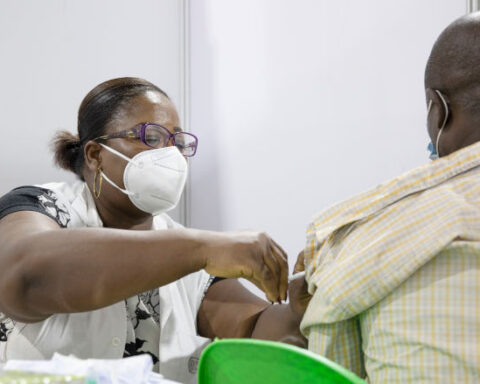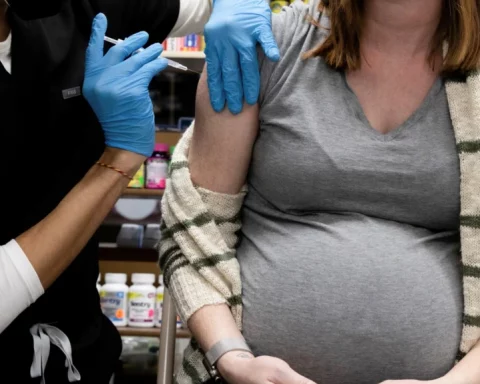There have been quite a number of pandemics in previous centuries which resulted in large numbers of deaths. For example, the Justinian plague that possibly halved the world’s population in the 6th Century, the Bubonic Plague in the 1300s and more recently, the 1918 infuenza pandemic that caused around 50 million deaths worldwide, including 228,000 deaths in Britain.
Deaths
During the COVID-19 outbreak, weekly deaths have been at their highest recorded level and compared to pandemics that have occurred in recent history, the death rate has been much higher for older people. Some of these may have occurred in the near future anyway, which could reduce the number of deaths in the coming period. Conversely, it has also been suggested that COVID-19 is and will be indirectly responsible for some deaths because of lower numbers seeking and undergoing treatment for other conditions. This would include people who could have gone on to live for many more years. The long-term health outlook of COVID-19 survivors is also not yet understood and may influence deaths’ patterns in the future.
Overall, this means there are liable to be factors impacting in opposite directions. The most effective way to measure the impact of COVID-19 on long-term mortality patterns is to look at all deaths that are above what would normally be expected (excess mortality) and continue to monitor this over the coming months and years. ONS has work underway investigating the long-term impact of COVID-19 on survivor’s health, which will be published in early 2021.
Births
Although not directly comparable, past events that caused high numbers of deaths resulted in an initial decline in births, followed by higher numbers around 1 to 5 years after the event, which influences the population structure, for example, the period following WW1. This time, the coronavirus pandemic has fallen within a time of decreasing fertility trends and there are factors which may impact in opposite directions. The lockdown period may result in more births, since couples are less likely to have spent time away from each other. In addition, family planning services may have been accessed less frequently.
However, the economic uncertainty resulting in loss of income and lower job prospects may be encouraging some couples to delay having children, and the formation of new relationships will be reduced under the lockdown conditions. Fertility treatments are also likely to have been accessed less. This may simply delay when people have children but delays can also mean couples having fewer children. Therefore, any long-term change in fertility that may have been caused by the coronavirus pandemic will be difficult to see for several years.
Migration
Before the pandemic, long-term international migration to the UK had been broadly stable since 2016, although the 12 months leading up to the coronavirus pandemic saw migration levels increase, driven by increases in non-EU student arrivals mainly from China and India. Our latest estimate of net migration is 313,000 for the year ending March 2020, which does not include the significant impact the pandemic has had on international migration since then. There has been a decrease in international travel to and from the UK in recent months. Because of the restrictions, the numbers of international migrants to and from the UK are likely to be low from March 2020. It is difficult to predict the longer-term picture, due to the potential impact of the end of the transition period for the UK’s departure from the European Union, ending freedom of movement between the UK and EU. However, COVID-19 has implications for international study and relative economic conditions affecting the likelihood of finding work. Global uncertainty regarding travel restrictions and the threat of subsequent waves of infection may tempt people to stop or delay their plans to move abroad.
Considering migration between areas within the UK, there could be fewer moves in 2020 for reasons including difficulties in travelling to different areas and viewing properties; changing personal circumstances; reduced job opportunities; and an increase in people working from home. In addition, some students may postpone their study, while others may choose to remain in the family home and attend their local university or study remotely if more courses are offered online. In terms of long-term implications for the population, there is evidence that delays in leaving the parental home may reduce the number of moves over a lifetime.
Challenges with measuring the demographic impact of COVID-19
Births and deaths are based on registration processes, so will continue to be measured reliably, once delays in the registration process of births due to lockdown restrictions are recovered. However, the main source of international migration data has been the International Passenger Survey (IPS), which has been suspended as a result of reduced air travel and the proximity of face to face interviews. This means that we need to use alternative data sources to provide international migration statistics. We were already undergoing a transformation program to this end, covering population and migration statistics. The new UK immigration system, due to be implemented in 2021, will also influence the patterns.
Within the UK, estimates of moves are typically reliant on people changing their GP. However, if someone has moved temporarily (for example, a student returning to their family home), they may not re-register. This is liable to affect population estimates for the present period.
How might the population look in the future?
At this stage the full impact of COVID-19 on the UK population is unclear. While changes in infection rates will continue to be closely monitored, it may be many years before we can measure the full impact. As we have seen, there are likely to be impacts on births and migration as well as deaths, and this is complicated by different factors pulling in different directions. However, our work on transforming migration statistics, together with the comprehensive births and deaths registration processes, mean that we will continue to provide high quality data to help us understand the developing impact of the pandemic.






